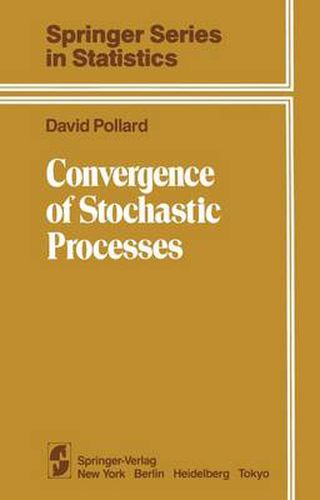Readings Newsletter
Become a Readings Member to make your shopping experience even easier.
Sign in or sign up for free!
You’re not far away from qualifying for FREE standard shipping within Australia
You’ve qualified for FREE standard shipping within Australia
The cart is loading…






This title is printed to order. This book may have been self-published. If so, we cannot guarantee the quality of the content. In the main most books will have gone through the editing process however some may not. We therefore suggest that you be aware of this before ordering this book. If in doubt check either the author or publisher’s details as we are unable to accept any returns unless they are faulty. Please contact us if you have any questions.
A more accurate title for this book might be: An Exposition of Selected Parts of Empirical Process Theory, With Related Interesting Facts About Weak Convergence, and Applications to Mathematical Statistics. The high points are Chapters II and VII, which describe some of the developments inspired by Richard Dudley’s 1978 paper. There I explain the combinatorial ideas and approximation methods that are needed to prove maximal inequalities for empirical processes indexed by classes of sets or classes of functions. The material is somewhat arbitrarily divided into results used to prove consistency theorems and results used to prove central limit theorems. This has allowed me to put the easier material in Chapter II, with the hope of enticing the casual reader to delve deeper. Chapters III through VI deal with more classical material, as seen from a different perspective. The novelties are: convergence for measures that don’t live on borel a-fields; the joys of working with the uniform metric on D[O, IJ; and finite-dimensional approximation as the unifying idea behind weak convergence. Uniform tightness reappears in disguise as a condition that justifies the finite-dimensional approximation. Only later is it exploited as a method for proving the existence of limit distributions. The last chapter has a heuristic flavor. I didn’t want to confuse the martingale issues with the martingale facts.
$9.00 standard shipping within Australia
FREE standard shipping within Australia for orders over $100.00
Express & International shipping calculated at checkout
This title is printed to order. This book may have been self-published. If so, we cannot guarantee the quality of the content. In the main most books will have gone through the editing process however some may not. We therefore suggest that you be aware of this before ordering this book. If in doubt check either the author or publisher’s details as we are unable to accept any returns unless they are faulty. Please contact us if you have any questions.
A more accurate title for this book might be: An Exposition of Selected Parts of Empirical Process Theory, With Related Interesting Facts About Weak Convergence, and Applications to Mathematical Statistics. The high points are Chapters II and VII, which describe some of the developments inspired by Richard Dudley’s 1978 paper. There I explain the combinatorial ideas and approximation methods that are needed to prove maximal inequalities for empirical processes indexed by classes of sets or classes of functions. The material is somewhat arbitrarily divided into results used to prove consistency theorems and results used to prove central limit theorems. This has allowed me to put the easier material in Chapter II, with the hope of enticing the casual reader to delve deeper. Chapters III through VI deal with more classical material, as seen from a different perspective. The novelties are: convergence for measures that don’t live on borel a-fields; the joys of working with the uniform metric on D[O, IJ; and finite-dimensional approximation as the unifying idea behind weak convergence. Uniform tightness reappears in disguise as a condition that justifies the finite-dimensional approximation. Only later is it exploited as a method for proving the existence of limit distributions. The last chapter has a heuristic flavor. I didn’t want to confuse the martingale issues with the martingale facts.